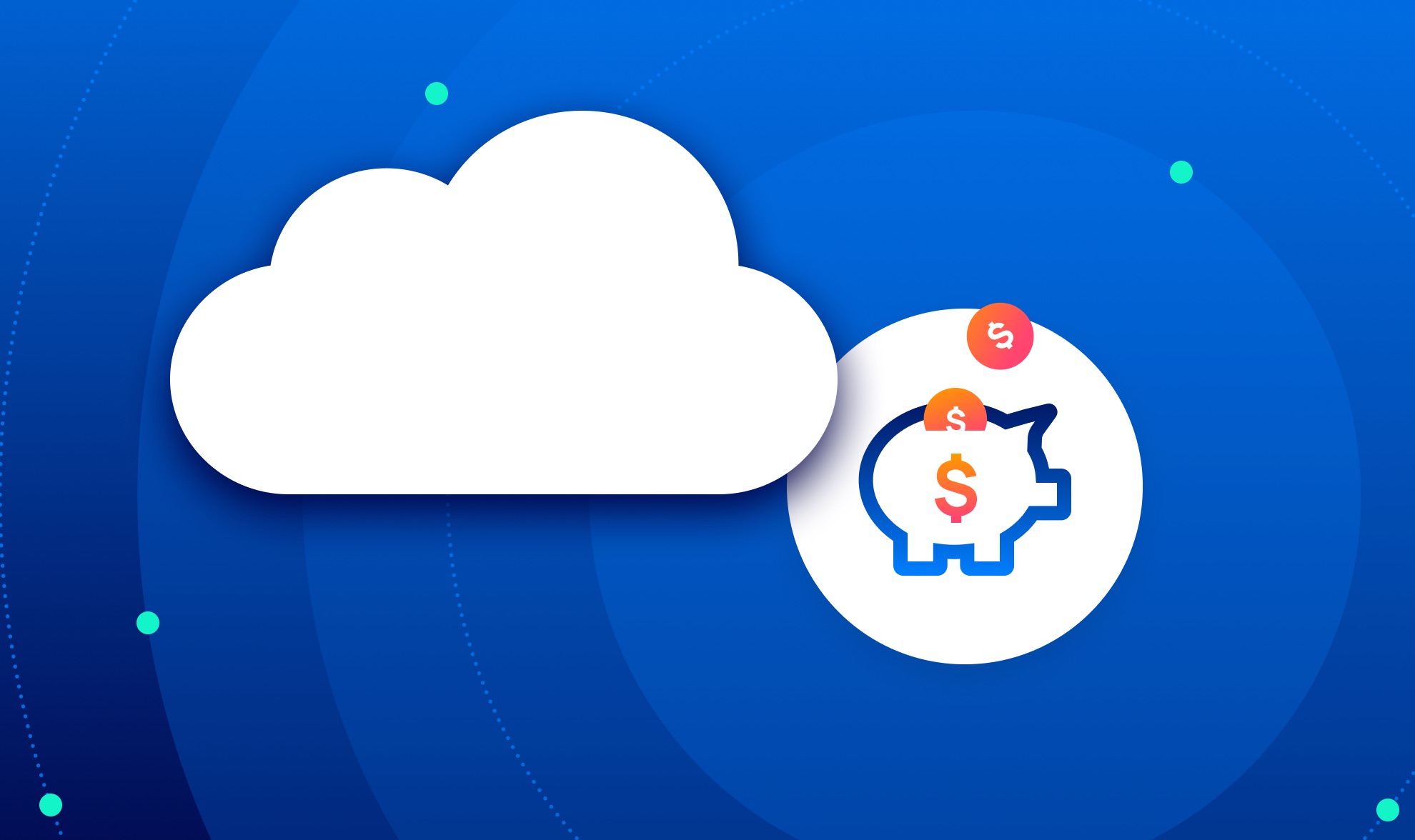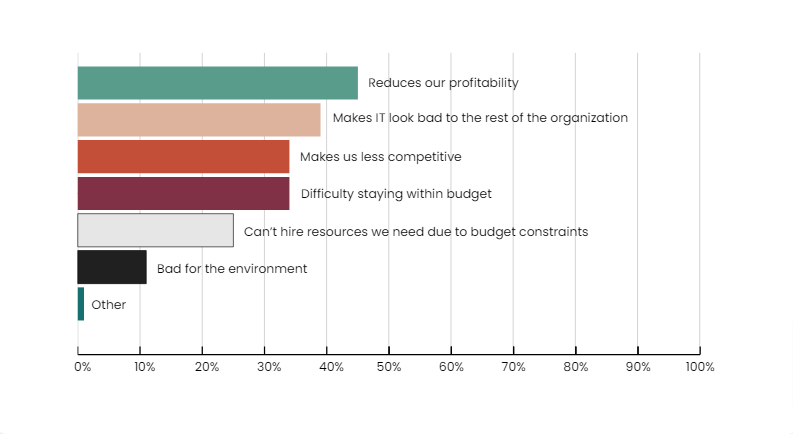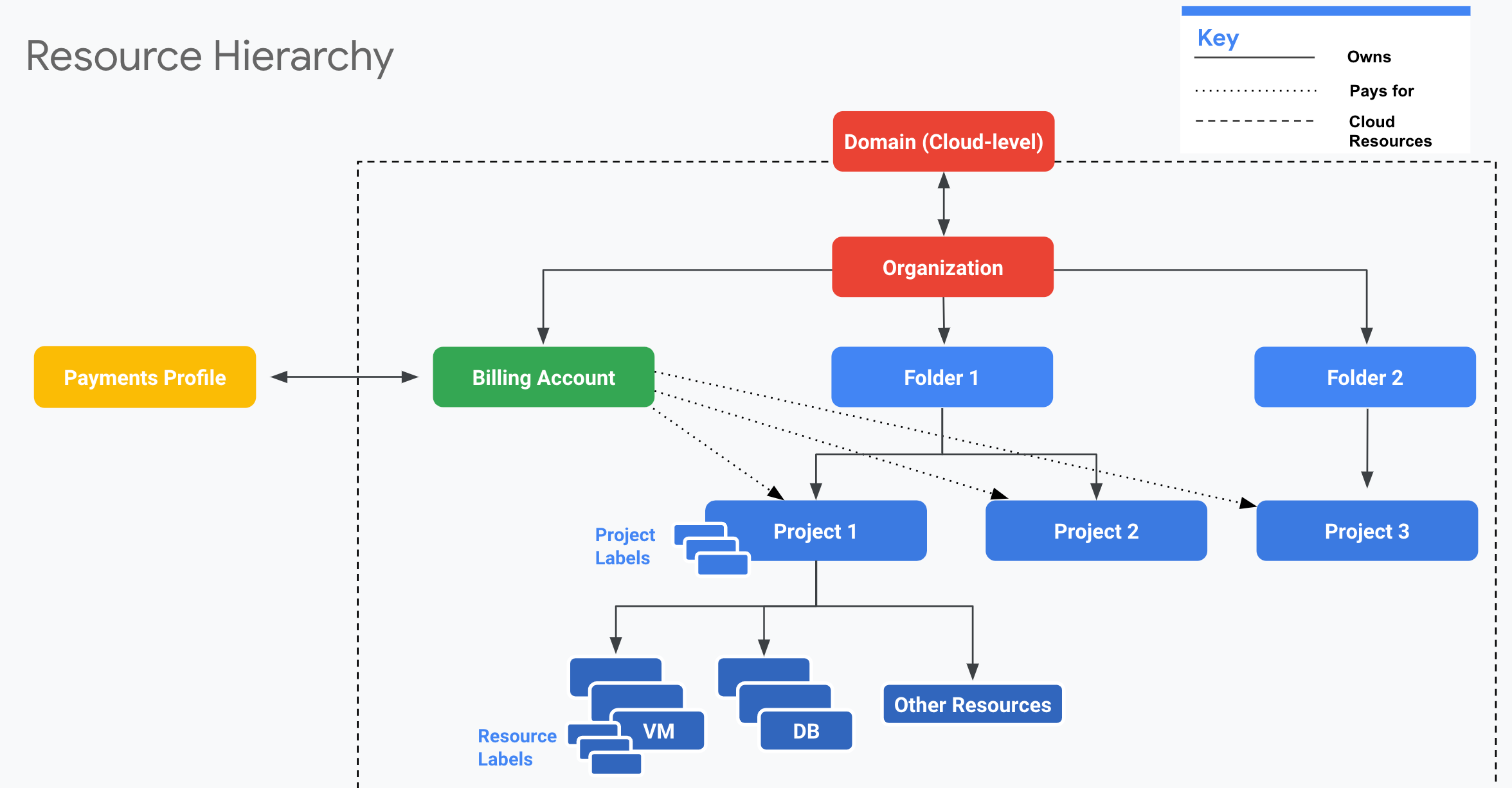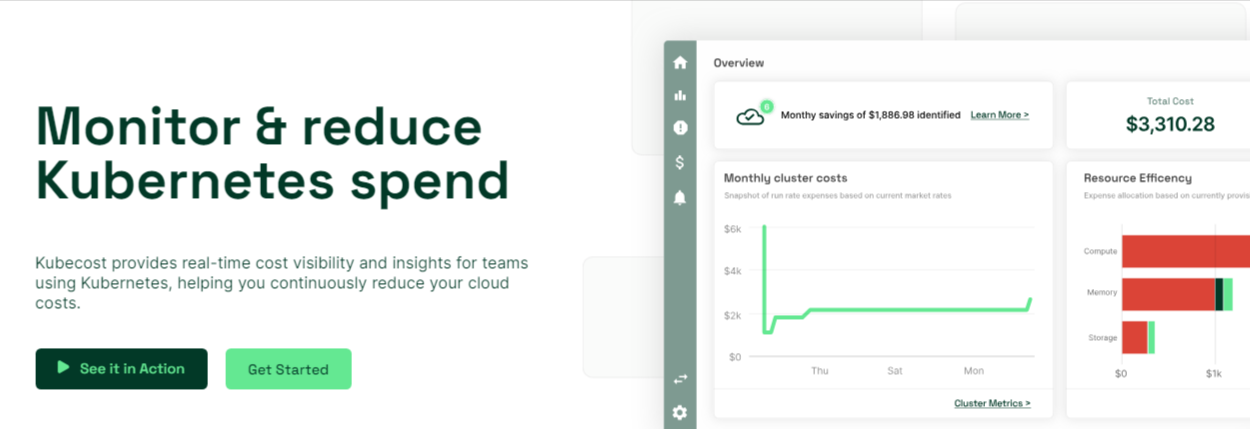Contents
- What is Cloud Cost Optimization?
- Key Takeaways
- How Does Your Organization’s Cloud Waste Impact You?
- Top Cloud Cost Management Tools
- 1. GCP Billing
- 2. AWS Cost Explorer – Cloud Cost Analysis
- 3. Kubecost – Cloud Cost Monitoring and Management
- Key Considerations for Cloud Migration
- 15 Cloud Cost Optimization Best Practices
- Bonus Tips for Cloud Cost Optimization Champions
- Final Words
- Also Read –
In today’s rapidly evolving digital landscape, effective cloud cost optimization has become a critical practice for organizations leveraging cloud services. Cloud cost optimization involves the strategic management and allocation of cloud resources to balance performance, cost, compliance, and security requirements. This dynamic process requires constant monitoring and adjustment to adapt to changing application needs and fluctuating cloud pricing. By implementing best practices such as reviewing billing information, right-sizing services, utilizing reserved instances, and leveraging automated tools, businesses can significantly reduce their cloud expenditures while ensuring optimal performance and resource utilization.
What is Cloud Cost Optimization?

Cloud cost optimization is a strategic approach focused on controlling and minimizing the expenses associated with cloud computing services. It goes beyond simple cost-cutting by involving rigorous analysis of current cloud usage, identifying inefficiencies, and eliminating waste. The goal is to enhance visibility into the cloud environment to ensure effective resource utilization while balancing performance, security, and availability. This dynamic process adapts to changing application needs and cloud pricing, leveraging detailed metrics, analytics, and automated tools to maintain optimal cost efficiency and performance thresholds.
Key Takeaways
- Understand Your Cloud Usage: Begin by comprehensively analyzing your current cloud usage to identify inefficiencies. Tool like GCP Billing can help you monitor and manage your cloud resources effectively.
- Right-Sizing Your Resources: Optimize by selecting the right size and type of cloud resources for your needs. Avoid over-provisioning to save costs and improve performance.
- Automate to Optimize: Implement automation for routine tasks such as scaling, patching, and backups. Automation tools like AWS Lambda and Azure Functions can help reduce manual effort and increase efficiency.
- Implement Cost Management Tools: Utilize built-in cost management tools provided by cloud providers like AWS Cost Explorer and Azure Cost Management to gain insights into spending patterns and identify areas for cost reduction.
- Optimize for Performance: Apply best practices for performance optimization, including using content delivery networks (CDNs), optimizing database queries, and implementing caching strategies.
- Ensure Security and Compliance: Regularly review and update security measures and compliance protocols to protect your data and meet regulatory requirements.
- Leverage Serverless Architectures: Consider adopting serverless architectures to reduce operational overhead and focus on core business logic.
- Continuous Monitoring and Improvement: Establish a process for continuous monitoring of cloud resources and performance. Use insights gained to make ongoing optimizations.
How Does Your Organization’s Cloud Waste Impact You?

Top Cloud Cost Management Tools
1. GCP Billing

GCP Billing is a service provided by Google Cloud Platform (GCP) that allows users to manage and track their cloud expenses. It provides detailed billing reports, budgeting tools, and cost analysis features that help organizations understand their spending patterns and optimize costs.
Effective cost management is crucial for preventing overspending and ensuring that cloud resources are used efficiently. GCP Billing helps organizations keep their cloud expenses under control by providing visibility into their spending and enabling them to set budgets and alerts.
A. Setting Up GCP Billing Reports:
- Navigate to the Billing Console: Log in to your GCP account and go to the Billing section from the console.
- Access Reports: Select the “Reports” tab to view detailed billing reports. You can customize these reports to show cost data for specific projects, time periods, and services.
- Export Reports: Use the export feature to download billing data in CSV format for further analysis.
B. Creating Budgets:
- Set Up a Budget: In the Billing Console, go to the “Budgets & alerts” section.
- Define Budget Amount: Enter the amount you want to set as your budget.
- Configure Alerts: Set up email alerts to notify you when spending approaches or exceeds the budget.
C. Analyzing Cost Data:
- Use Cost Breakdown: Utilize the cost breakdown features to see which services and resources are consuming the most budget.
- Trend Analysis: Analyze trends over time to identify any unexpected increases in spending and take corrective action.
- Cost Attribution: Attribute costs to different departments or projects to understand their individual contributions to the overall cloud bill.
Benefits of GCP Billing & Cost Management Tool
- Monitoring: GCP Billing allows for continuous monitoring of cloud expenses, ensuring that costs remain within the set budget.
- Control: With detailed insights and alerts, organizations can take proactive steps to manage and optimize their cloud spending.
- Transparency: The ability to generate detailed reports and attribute costs to specific projects provides transparency and accountability within the organization.
2. AWS Cost Explorer – Cloud Cost Analysis

AWS Cost Explorer is a tool provided by Amazon Web Services (AWS) that helps users visualize, understand, and manage their AWS costs and usage. It offers an intuitive interface and advanced filtering capabilities to analyze spending patterns and optimize costs. AWS Cost Explorer aids in identifying cost drivers and areas where spending can be optimized, helping organizations reduce their AWS bills and allocate resources more efficiently.
A. Accessing AWS Cost Explorer
- Log In to AWS Management Console: Access your AWS account and navigate to the Cost Management section.
- Open Cost Explorer: Select “Cost Explorer” to start analyzing your cost and usage data.
B. Creating Custom Reports
- Select Date Range: Choose the time period for which you want to analyze costs.
- Apply Filters: Use filters to focus on specific services, regions, or tags.
- Generate Reports: Create and save custom reports that display the data in various formats such as graphs and tables.
C. Setting Up Budgets and Alerts
- Navigate to Budgets: In the Cost Management console, go to the “Budgets” section.
- Define Budget Parameters: Set the budget amount and specify the scope (e.g., specific services or accounts).
- Configure Notifications: Set up email alerts to notify you when spending reaches certain thresholds.
AWS Cost Explorer Benefits
- Visibility: AWS Cost Explorer provides detailed insights into cost and usage patterns, enabling better budget management.
- Optimization: By analyzing spending trends, organizations can identify opportunities for cost optimization, such as right-sizing resources or leveraging reserved instances.
- Accountability: Custom reports and cost allocation tags help in attributing costs to specific projects or departments, ensuring accountability.
3. Kubecost – Cloud Cost Monitoring and Management

KubeCost is a tool designed for managing and optimizing costs in Kubernetes environments. It provides real-time cost visibility and insights into resource usage, helping organizations control their spending on Kubernetes clusters. As Kubernetes usage grows, managing its associated costs becomes critical. KubeCost helps in understanding and optimizing these costs by providing detailed breakdowns and recommendations.
A. Installing KubeCost
- Install Helm: Ensure Helm is installed on your Kubernetes cluster.
- Add KubeCost Repository: Add the KubeCost Helm repository to your Helm configuration.
- Deploy KubeCost: Use Helm to deploy KubeCost in your cluster.
B. Using KubeCost Dashboard
- Access Dashboard: Access the KubeCost dashboard via your web browser.
- View Cost Reports: Explore cost reports that show the cost of CPU, memory, and other resources.
- Analyze Cost Allocation: Use cost allocation features to see costs by namespace, deployment, or service.
C. Optimizing Costs
- Identify Unused Resources: Use KubeCost to find and clean up unused or underutilized resources.
- Right-Size Workloads: Adjust resource requests and limits based on usage patterns to optimize costs.
- Implement Recommendations: Follow KubeCost’s recommendations for further cost savings.
KubeCost Benefits
- Visibility: Provides granular visibility into Kubernetes costs, making it easier to track and manage expenses.
- Optimization: Helps in identifying opportunities to reduce costs through right-sizing and cleanup of resources.
- Efficiency: Enables better resource allocation and usage, leading to overall cost efficiency in Kubernetes environments.
Key Considerations for Cloud Migration
Moving to the cloud can offer numerous benefits for businesses, including increased scalability, flexibility, and cost savings. However, there are also some potential drawbacks and considerations to keep in mind before making the switch. Here are some things to know before moving to the cloud:
- Cloud migration strategy: Define a clear migration strategy that aligns with your business goals and objectives. Identify which applications and data should be moved to the cloud, and when. Consider a phased approach to migration, starting with non-critical applications and gradually moving to critical ones.
- Cloud service provider selection: Choose reliable and reputable cloud service services from RedBlink Technologies that meets your specific needs. Research different providers, compare their offerings, and assess their reliability, security, and performance. Consider factors such as data privacy, uptime guarantees, and customer support.
- Security and compliance: Ensure that your chosen cloud service provider meets relevant security and compliance standards. Verify their certifications, such as SOC 2, ISO 27001, and PCI DSS, and ask for third-party audits. Implement strong authentication, access controls, and encryption for data in transit and at rest.
- Data privacy: Understand the data privacy laws and regulations applicable to your industry and geographic location. Ensure that your cloud provider has robust policies and procedures in place to protect sensitive data, such as personally identifiable information (PII) and protected health information (PHI).
- Vendor lock-in: Be aware of vendor lock-in risks when choosing a cloud provider. Ensure that your data and applications can be easily migrated to another provider if needed, and avoid proprietary solutions that limit interoperability.
- Cost management: Estimate the total cost of ownership (TCO) for your cloud migration, including hardware, software, migration, and ongoing operational expenses. Monitor your cloud spending regularly to avoid unexpected charges and optimize resource utilization.
- Network connectivity: Ensure high-speed network connectivity between your premises and the cloud data center. Consider dedicated connections, such as Direct Peering or ExpressRoute, for improved performance and reduced latency.
- Application readiness: Assess whether your applications are ready for the cloud. Some legacy apps may require refactoring or modernization to function effectively in a cloud environment. Plan for adequate testing and debugging before deploying applications in production.
- Talent and skills: Ensure that your team possesses the necessary skills and expertise to manage and operate cloud infrastructure and applications. Provide training and upskilling programs to bridge any gaps.
- Change management: Communicate the impact of cloud migration to stakeholders, including employees, customers, and partners. Develop a change management plan to minimize disruptions and ensure a smooth transition.
- Disaster recovery: Develop a comprehensive disaster recovery plan that includes cloud-based backup and restore processes. Ensure that your DR plan is tested regularly and aligned with your business continuity objectives.
- Governance and compliance: Establish a governance framework that ensures compliance with regulatory requirements, data privacy laws, and internal policies. Define roles and responsibilities for cloud management and monitoring.
- Continuous monitoring: Regularly monitor cloud resources, applications, and data for performance, security, and compliance. Leverage automation tools and analytics to detect issues proactively and enhance cloud operations.
- Hybrid integration: If you opt for a hybrid cloud strategy, integrate your on-premises infrastructure with cloud services seamlessly. Use APIs, containers, and microservices to enable communication between environments.
- Exit strategy: Have a well-defined exit strategy in case you decide to switch cloud providers or return to on-premises infrastructure. Ensure that your data and applications can be transferred smoothly and with minimal disruption.
By carefully considering these factors, you can ensure a successful cloud migration that delivers the desired benefits for your business while minimizing risks and challenges.
15 Cloud Cost Optimization Best Practices
1. Understanding Billing Structure
It all starts with understanding what you’re paying for. Familiarize yourself with your cloud provider’s billing structure and pricing models. This includes understanding the costs associated with
-
- Different Services,
- Instance Types,
- Storage Options, And
- Data Transfer Fees.
Having a clear grasp of your bill empowers you to make informed decisions and identify potential savings opportunities.
2. Set Spending Limits
Just like managing your budget, setting clear spending limits for your cloud usage is essential. Cloud providers offer budgeting tools that allow you to define spending thresholds for different departments or projects. This fosters accountability and helps prevent overspending.
3. Identify Idle Resources
Not all resources you provision are constantly in use. Regularly scan your cloud environment for “idle resources” like unused virtual machines, storage volumes, or reserved instances. Shutting down or terminating these resources can significantly reduce your cloud bill. Think of it like switching off lights in an empty room – a simple step with a significant impact.
4. Optimize Resource Utilization
Similar to idle resources, some resources might be underutilized outside specific work hours. Development servers, for instance, might be idle overnight or during weekends. Schedule these resources to automatically shut down during non-peak periods. This approach ensures you only pay for the resources you actively use, similar to turning off your office lights when everyone leaves for the day.
5. Right-size Your Resources
Choosing the right size (e.g., CPU, memory) for your virtual machines is essential for cost optimization. Don’t overprovision resources with excessive capabilities that your workloads don’t require. Scale up or down instances based on actual usage patterns to avoid paying for more computing power than you need. Imagine buying a massive truck just to run errands – it’s simply not cost-effective.
6. Commit, Save, and Win
Reserved instances are a great option for predictable workloads. By committing to using a specific instance type for a certain period, you can unlock significant discounts compared to on-demand pricing. However, keep in mind that reserved instances require upfront commitment, so ensure your workload demands are consistent.
7. Savings Plans: Flexibility Meets Savings
Similar to reserved instances, savings plans offer discounted pricing for committed compute resources over a specific period. However, unlike reserved instances, savings plans offer more flexibility as you’re not locked into a specific instance type. This is ideal for workloads with varying resource requirements.
8. Utilize Spot Instances
Spot instances are a unique offering where you can leverage spare cloud capacity at significantly lower prices. These instances are interruptible, meaning they can be terminated at any time, but they offer a cost-effective option for non-critical workloads that can tolerate occasional interruptions. Think of it like finding a great deal on last-minute airline tickets – you might not get the specific seat you prefer, but you save a significant amount.
9. Mind Your Data Transfer Fees
Pay close attention to data transfer fees incurred when moving data within different regions or between your cloud environment and on-premises infrastructure. Optimize data transfer processes by:
- Storing frequently accessed data in the same region as your applications.
- Utilizing compression techniques to reduce data size before transfer.
- Exploring alternative data transfer options like dedicated data connections.
10. Single-cloud vs. Multi-cloud Strategy
Deciding between a single-cloud or multi-cloud strategy can impact your costs. A single-cloud approach simplifies management but may limit your ability to negotiate better pricing. Conversely, a multi-cloud approach offers greater flexibility and potentially lower costs by leveraging competitive pricing from different providers, but it also increases complexity. Weigh the pros and cons based on your specific needs and resources.
11. Monitor and Investigate Costs
Don’t let unusual spending go unnoticed. Utilize cloud cost monitoring tools to identify and investigate cost anomalies. These anomalies could be caused by:
- Misconfigured resources: Ensure your resources are configured correctly to avoid unexpected charges.
- Security vulnerabilities: Patch vulnerabilities promptly to prevent unauthorized access and potential resource misuse.
- Sudden spikes in usage: Investigate the root cause of unexpected usage spikes to identify potential issues and prevent future occurrences.
Imagine being alerted to a sudden surge in your electricity bill. You’d investigate the cause, right? Similarly, proactively monitor your cloud costs to identify and address any anomalies before they cause significant financial impact.
12. Choose the Right Storage Option
Choosing the right storage option based on your data access needs can significantly impact costs. Here’s a breakdown:
- Object storage: Ideal for infrequently accessed data like backups or archived files, offering cost-effective storage for large datasets.
- Block storage: Designed for frequently accessed data like databases or application files, providing high performance but at a higher cost compared to object storage.
- Archive storage: Perfect for long-term data retention, offering the most cost-effective option for data that rarely needs to be accessed.
Think of it like storing your seasonal decorations in a separate box instead of keeping them in your main closet – you utilize the most cost-effective option based on access frequency and importance.
13. Integrate Cost Optimization
Don’t wait until applications are deployed to consider cost optimization. Integrate cost-conscious practices throughout the software development lifecycle (SDLC). Encourage developers to:
- Choose cost-efficient resources during application design.
- Implement code optimization techniques to minimize resource usage.
- Utilize cloud-native design principles to leverage the inherent cost benefits of cloud platforms.
By incorporating cost optimization considerations throughout the development process, you can build applications that are not only efficient but also cost-effective to run in the cloud.
14. License Like a Pro
Review the software licenses used within your cloud environment and identify opportunities to consolidate or eliminate unnecessary licenses. Consider open-source alternatives to reduce licensing costs where possible. Negotiating better licensing deals with vendors can also help optimize your software spending.
Imagine having multiple subscriptions for similar services – consolidating them can save you money. The same principle applies to software licenses – eliminate unnecessary ones and explore cost-effective alternatives.
15. Track Spending by Department or Project
Allocating cloud costs to specific departments or projects fosters accountability and encourages cost-conscious practices within different teams. By tracking costs at a granular level, you can:
- Identify areas where cloud usage is high and investigate potential optimization opportunities.
- Motivate teams to make informed decisions about resource utilization.
- Promote a culture of cost awareness throughout your organization.
Imagine having a detailed breakdown of your household’s utility bills – it helps you understand where energy is being consumed and empowers you to make informed decisions to optimize usage. Similarly, tracking cloud costs by department or project provides valuable insights for optimizing your cloud expenditure.
Bonus Tips for Cloud Cost Optimization Champions
- Negotiate Licensing Deals: Don’t be afraid to negotiate better licensing deals with software vendors. By demonstrating your commitment and leveraging your purchasing power, you might be able to secure more favorable terms.
- Regular “Cloud Clean-up”: Schedule regular reviews to identify and delete unused EBS snapshots and other unnecessary resources. These seemingly small actions can accumulate significant savings over time.
- Embrace a Culture of Cost Awareness: Foster a culture of cost awareness within your organization. Encourage employees to be mindful of their cloud resource usage and actively seek opportunities for optimization.
Final Words
In conclusion, cloud cost optimization is a vital aspect of cloud computing that can help businesses maximize the value they derive from their cloud investments. With the right strategies and practices in place, businesses can streamline their cloud infrastructure, minimize waste, and optimize cost efficiency. By following the 15 best practices outlined in this blog, businesses can take control of their cloud spending and ensure that their cloud investments deliver the desired returns.
However, cloud cost optimization is not a one-time exercise. It requires continuous monitoring, evaluation, and adaptation to ensure that your cloud environment remains optimized and cost-effective. This is where partnering with a leading provider like RedBlink Technologies can make all the difference.
RedBlink Technologies is a premier cloud computing company that specializes in helping businesses optimize their cloud costs and maximize their cloud investments. Our team of experts has extensive experience in cloud cost optimization and can help you develop a customized plan tailored to your specific needs and goals.
With RedBlink Technologies, you can rest assured that your cloud infrastructure is in good hands. Contact us today to learn more about our cloud cost optimization services and how we can help you optimize your cloud costs and maximize your ROI.
Also Read –
- Google Cloud Cost Optimization Best Practices
- Azure Cost Optimization Best Practices
- AWS Cost Optimization Best Practices
- 20 FinOps Best Practices

Director of Engineering | CTO | Software Developer
As a passionate technologist and seasoned software developer, I specialize in creating innovative solutions at the intersection of AI and software engineering. With a keen interest in leveraging the latest technologies to solve real-world problems, my work spans developing advanced AI models to designing scalable software architectures. Beyond coding, I contribute to tech blogs, sharing insights on AI trends, software best practices, and the future of technology. My mission is to empower organizations and individuals through technology, driving forward the boundaries of what’s possible

